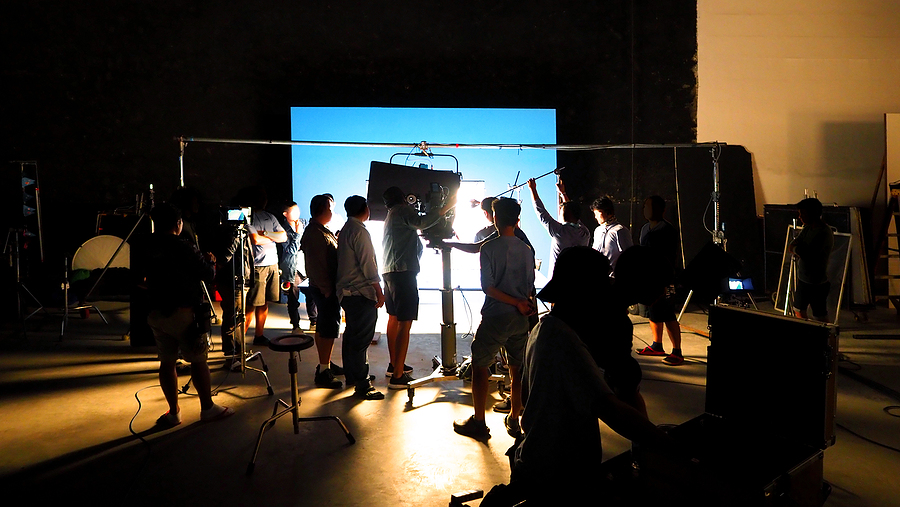The rapid advancements in digital display technology over the past decade mean that LED screens are now playing a key role in visual communication across a range of industries. Digital signage is rapidly replacing traditional display methods such as static billboards, posters, and light screen projectors.
While LED technology is a bigger initial outlay than other methods for most businesses, the return on investment in the long term and the superior performance of the display bring enormous benefits.
Here’s a look at some of the leading sectors where game-changing video wall technology is reshaping communication and customer experience.
The retail sector
LED screens have made a deep impact on the retail sector: think back to the last time you visited a shopping mall. It is likely that you encountered indoor or outdoor street furniture such as digital billboards to advertise brands or inform you of the available facilities; and strategically placed in-store displays.
The extra brightness and definition of LED displays compared to printed materials or even light projectors is unrivalled, and the screens are eye-catching and clearly visible even from a distance. The screens can be used to create modern and compelling window displays to attract customers into the store and showcase products to best advantage.
The visuals can be used to enhance the brand story as the customer makes their journey around the store, prompting fresh perspectives and ideas and increasing customer loyalty. Digital signage can also be used to boost sales by promoting seasonal or timely offers and deals; and driving foot traffic to the most profitable product displays.
The content can be programmed not only to reflect customer demographics, the time of day, or even the weather, but also to cross-sell or up-sell items with targeted messages at strategic points around the store.
The hospitality sector
Restaurants, hotels and event venues are increasingly using digital signage to make guest experiences more convenient, enjoyable and even safer. In restaurants for example, digital menu boards mean that customers can easily view the most up to date content that can be adjusted to reflect the time of day, availability and so on.
This saves the need to continually reprint paper menus or update boards manually at the start of each day, saving costs and freeing up staff to focus on other duties. It also allows for the possibility of upselling or cross-selling; for example, suggesting that a customer buys a cake along with a coffee, or a more expensive version of a sandwich.
In the hotel sector, digital signage can be used to create attractive and welcoming reception areas that set the tone for the guests’ stay. They can also be used to impart useful information such as nearby tourist attractions and places to eat, and wayfinding and travel information.
In event venues, LED video walls are invaluable for providing high quality visuals and dynamic displays for conferences, stage performances, and trade shows. Whether a captivating stage backdrop or to boost brand visibility, LED screens are able to outshine more traditional light display methods.
The education sector
The traditional chalkboard and even whiteboards are now being routinely upgraded to digital screens throughout the educational sector in the UK and beyond. They are used in university lecture theatres and school classrooms to present information in a clear, engaging and memorable way.
This makes the learning experience easier and more accessible for students, and means that they will always be able to have the most up to date and relevant information in the subject area, rather than having to rely on printed materials that might be outdated. This enhances the overall quality of the education and raises academic achievement.
Furthermore, the screens can be used in other contexts across school and college campuses. For example, they can be used to communicate real time information such as timetable or classroom changes, and to advertise events or make emergency or health and safety announcements.
Healthcare
In healthcare settings, digital screens are used for a wide range of purposes, from educating patients to managing waiting rooms. It’s a sector that relies on swift and accurate communication, and digital tools not only save a great deal of time, but also reduce the risk of mistakes and misunderstandings that could have serious consequences.
Hospitals and clinics can be stressful and busy places, and LED screens can help patients feel less anxious by keeping them well informed and entertained as they await treatment or attend with loved ones.
Corporate offices
Larger offices make effective use of LED screens to improve corporate communication and also to provide modern and professional conferencing facilities. The high quality screens can display crisp and clear text and infographics that can be easily understood during presentations with clients or staff training sessions, for example.
The screens can also enhance reception areas with brand identity, or be used to celebrate the achievements of the company such as industry awards or new contracts or clients, and to share news and announcements.
Transport hubs
Digital signage is now an integral part of modern transport hubs, providing travellers with real-time information about arrival and departure times, and updates on any delays, platform alterations and cancellations. This reduces pressure on platform staff and makes it easier for passengers to forward plan their journeys.
Digital signs also play an important role in safety and security, as the messages can be updated in a second to issue emergency warnings or instructions. They can also be used to provide wayfinding instructions and direct passengers to the correct platforms, departure gates, and facilities such as toilets and food and drink outlets.
In many train and bus stations, it’s now the norm to use touch screen LED self-service machines to purchase tickets, plan routes, and more.

